Greetings from Jakarta, and welcome to my first read of Leo Tolstoy's War and Peace. Book One is a wrap! Huzzah!
This (19) is the last chapter in the first book, 12h 13mins of audio narration, plus many more hours of warm-ups, retakes and pickups, editing and processing. This has been a momentous undertaking.
On to Book Two, which consists of five parts, then Book Three, “only” three parts, and lastly, Book Four with four parts. I still have a lot to record, about 32 hours more.
Due to ongoing renovations in the building, I was unable to record much these past months. Hopefully, things will quiet down and maybe I can catch up with
’s slow read at footnotes & tangents.The Sound
What do you think of the audio so far? I like how the RØDE NT-USB+ sounds. In later chapters, I changed the processing, removed the reverb and added a makeshift tent of sheets above my desk, which improved the overall quality slightly, or so I hope.
I also started to tone back plosives and “ess” sounds when recording, and edited out major mouth noises afterwards. What does that mean? Let’s have a look. The jagged bits below are audible pops and clicks.
The Logic Pro “Pencil” tool lets you edit the waveform of the audio directly. This method is destructive and has limited undo steps, which I found out the hard way, editing a take into oblivion, ending up having to record it again.
There are AI tools to remove mouth clicks and such, but they are all rubbish. So this AI did it manually. Still, some pops and clicks remain, but I hope they are minor enough not to spoil the listening experience. Let me know if you come across any that you feel need to be addressed.
Recording Book One
When I decided to record my first reading of War and Peace, I had lofty aspirations of reading and recording a chapter a day. This, the daily recording, for various reasons, did not happen, and in the end, I read ahead without recording, otherwise, I would still be stuck at Book One, Part One, Chapter 15, which is when the renovations began.
War and Peace has been often named the greatest novel ever written, although Tolstoy said it is "not a novel, even less is it a poem, and still less a historical chronicle."
Whatever you want to call it, it certainly is a beast of a book, one that will astound you, move you, and spur emotions at times that might drive you to throw the book at someone, preferably the character you are reading about at that moment, not because it is ludicrous, but because it rings true, painfully and joyfully so. Never have I read a book that depicts human nature in its entirety so vividly than here.
Clive James aptly wrote in his article “How did the BBC’s War And Peace measure up?”1
Despite the heaps of evidence that Tolstoy was in reality half crackers, you would swear from the pages of War And Peace that he was God’s stenographer.
I also feel half crackers for having decided to read and record the Maude translation, keeping all the French passages in French, German in German, including some Italian, but mostly a considerable amount of letters, yes, pages of letters, in French.
The book even starts in French. Talk about alienating you readers. French is used less and less as the story (and the war) progresses, which is on purpose, as is, of course, everything else in this epic tale.
There is not a single audiobook version out there that keeps the French and German parts. At least not that I’m aware of. So, if you want a trilingual narration of War and Peace, German/Russian pronunciation of the German/Russian names, and French names pronounced in French, then this may be the version for you.
While I did look up most names to verify pronunciation where in doubt, I might have pronounced some names “my” way. If you come across blatant mispronunciations, please send me a DM, specifying the chapter and time index, so I can correct it.
On the subject of pronunciation and articulation, how does one decide which way to narrate the countless characters? There are after all “only” 580 characters2 in War and Peace. It’s impossible to keep track, and I am merely consistent in alternating voices for different speakers.
One such example is Madame Bourienne and her guttural French Rs. Why then the rolling Rs for Madame Bourienne? I might have to re-record all of her lines unless I don’t, and let her roll her Rs whichever way she likes. Let me know what you think of her “Russian-French accent.”
Bloopers are something I wanted to do more of, but always forgot to save them and then never went back to “bounce” out previous save states from my gigabytes of audio data.
I realize, I probably shouldn’t have used separate tracks for each chapter, but it seemed impossible to record a whole “Part” as one endless track, so I opted to do one Logic Pro file per “Part” and a track per chapter, muting the “finished” chapters and bouncing out the one I was working on at the time.
Downside? Creating one long audio file will require extra work, merging all chapters into one track. While settings are always the same for each chapter, volume equalization currently isn’t done across all chapters, something to keep in mind. I guess, it would be better to keep all chapters on one track. Enough with the technical details… If you have any tips or tricks in that regard, please let me know in the comments below. I might try Hindenburg Narrator for my next project: Nineteen Eighty-Four.
A slow read (and even slower recording)
If you haven’t read War and Peace, then Simon Haisell’s slow read at
is a great way to experience this masterpiece. I cannot recommend it enough, the community and discussions around each chapter are insightful and always civil, and will enrich your reading manyfold. Even if you fall behind (I did), or read ahead (guilty), this way you’ll be sure to finish and get to meet fellow War and Peace readers from all over the world.Difference between reading and reading out loud
There are a few instances when I felt the translation did not do justice to the original, which may seem odd, since I don’t speak Russian, but sometimes, esp. when trying to record 300+ word sentences, you get the feeling that you are reading a translation, even more so when you are reading out aloud.
It happened more than once that I had to stop recording because I was stuck on the same sentence, repeating it over and over without managing to get it quite right, running out of air halfway through, mouth clicks, intonation, and, of course, due to all the aeroplanes, police sirens, neighbours drilling and hammering, and elephants.
Those who have tried to record a longer piece in “peace” in their apartment, heavy traffic, leaf blowers visiting outside every other minute, and neighbours, kids and dogs competing for background noise, will know how it is.
Recording this book has made me hyper-aware of the constant noise bombardment we are exposed to 24/7. It’s not normal. Noise pollution can affect your health.3 FYI, I have to switch off the fridge when I record.
The WHO guidelines for night noise recommend less than 40 dB(A) of annual average (Lnight) outside of bedrooms to prevent adverse health effects from night noise.
Well, according to my Health App, my weekly average db level so far is 63-72 db this year, with a record high of 111 db. Time to move someplace quiet…
If you are wondering where this data is coming from, it’s the Noise App and the noise levels are monitored by my Apple Watch.
What does this mean in terms of recording? There is no sound treatment to speak of in my apartment.
25 – 30 decibels is the most acceptable setting for theatres, concert halls, recording studios, prayer rooms, and public libraries. In a studio environment, this allows for a dry, clinical sound, and a clean recording.
This is why I have to record with the built in Noise Gate filter at all times, esp. when recording those long sentences I mentioned earlier. Here’s one of the shorter long sentences (128 words) from the previous chapter.
“On the narrow Augesd dam where for so many years the old miller had been accustomed to sit in his tasselled cap peacefully angling, while his grandson, with shirtsleeves rolled up, handled the floundering silvery fish in the watering-can, on that dam over which for so many years Moravians in shaggy caps and blue jackets had peacefully driven their two-horse carts loaded with wheat and had returned dusty with flour whitening their carts—on that narrow dam amid the wagons and the cannon, under the horses’ hoofs and between the wagon wheels, men disfigured by fear of death now crowded together, crushing one another, dying, stepping over the dying and killing one another, only to move on a few steps and be killed themselves in the same way.” (Book 1, Part 3, Chapter 18, time index 09:46)
The above is also a good example of the use of repetition, where the translation succeeds in creating that rhythm, on that narrow dam. The hemingwayapp.com editor rates the readability of that sentence as “poor.” It certainly wasn’t easy to record.
Repetition in Tolstoy
Things you will notice early on when reading War and Peace, are the numerous repetitions and adverbs, the seemingly simplistic Tolstoy prose that defies all creative writing advice, yet still captures and enthrals readers everywhere.
Undoubtedly, the repetitions (in Russian) create rhythm translations may sometimes fail to recreate or even seek to avoid, which is what I believe happened from time to time, and which was more apparent due to me recording.
Yes, the adverbs are just plentiful and I don’t mind them. The prose feels real. Tolstoy tells it “as it is.” No glossing over, minimal use of imagery, we get all of life’s beauty and cruelty, unfiltered, a realistic narration of events. True, it’s a lot of telling, instead of showing, but Tolstoy shows us plenty, too, when needed.
Tolstoy’s ungrammatical prose,4 has been discussed at length5 and books6 have been published about his use of repetition,7 and I shall leave you to it, should you be inclined to dig further.
Overall, I think, the Maude translation is outstanding, and, a few quibbles aside, I am happy with it, esp. since it is considered to be the closest to the original. Translation is always hard, and I can imagine even more so with Tolstoy.8
"Translating Tolstoy must be easy," he said. He meant that Tolstoy writes in relatively plain language, employing relatively short sentences compared to some of his peers. This notion could hardly be more wrong. Translating Tolstoy is very difficult indeed, for two main reasons: firstly because Tolstoy is a rule-breaker, deliberately writing incorrect Russian (especially in regard to gerunds and participles), and secondly because Tolstoyan simplicity, when translated into English, creates a false impression of undertranslation.
Tolstoy himself had this to say about repetition:
“I had begun to feel that life was a repetition of the same thing; that there was nothing new either in me or in him; and that, on the contrary, we kept going back as it were on what was old.” — Leo Tolstoy
Repetitions and challenges in translation aside, War and Peace is a brilliant book, and remains more relevant now than ever. A truly timeless masterpiece.
Recording will continue in August.
If you’ve missed previous chapters, please find them linked here on the Page Turners podcast page.
Note: You can use the RSS feed to get new episodes when they go live using your favourite podcast app.
About the French and German: All French and German parts are kept and read in French and German to retain the original experience. This edition (Maude) includes translations in English on the same page, which are not part of the audio.
Want to read along? I use the Oxford World’s Classics edition (translated by Louise and Aylmer Maude, edited by Amy Mandelker).
You can also listen to this read-through on my YouTube Channel. Subscribe for more updates, and read along with us!
TFTD Community
Thank you for reading and listening, and to all new subscribers, welcome and thank you for joining. Come and say Hi and hang out with other TFTD readers on our Discord.
https://en.wikipedia.org/wiki/List_of_War_and_Peace_characters
https://en.wikipedia.org/wiki/Noise_pollution
https://cdn.who.int/media/docs/default-source/who-compendium-on-health-and-environment/who_compendium_noise_01042022.pdf?sfvrsn=bc371498_3
https://languagehat.com/tolstoys-prose/
https://languagehat.com/repetition-in-tolstoy/
Creating and Recovering Experience: Repetition in Tolstoy by Natasha Sankovitch
https://languagehat.com/repetition-in-tolstoy-ii/
https://russiandinosaur.blogspot.com/2017/12/scylla-and-charybdis-steering-between.html


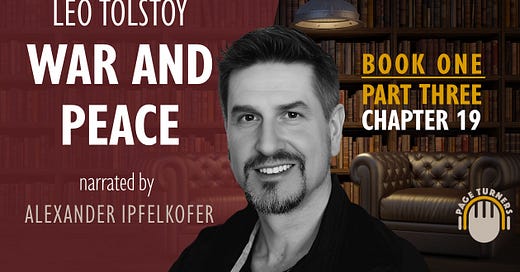





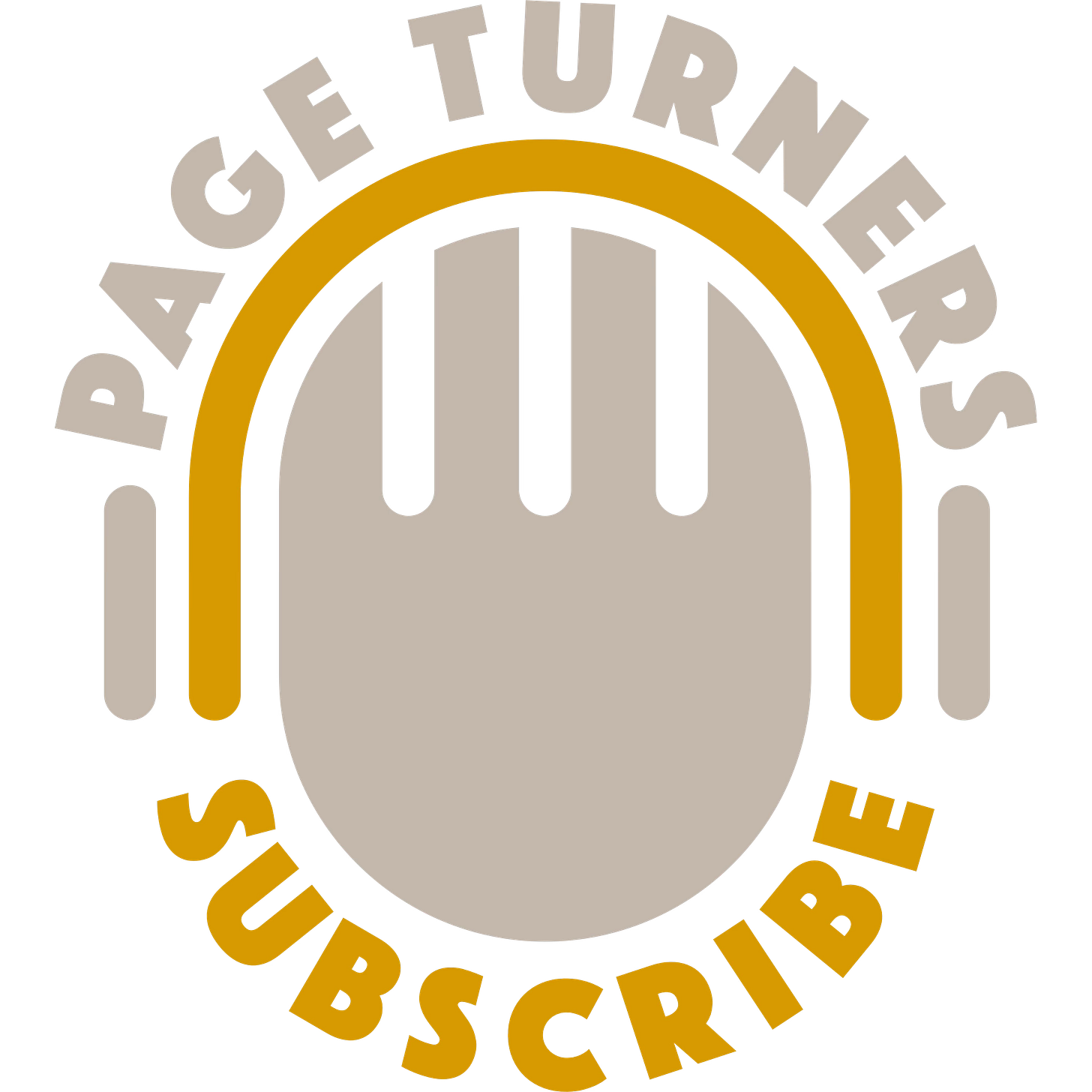

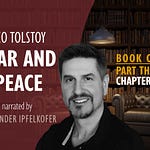
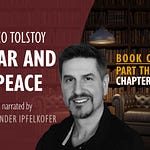

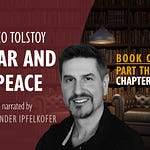
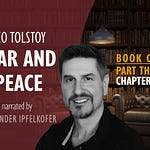
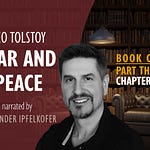
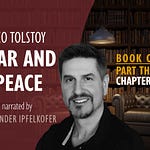
Share this post